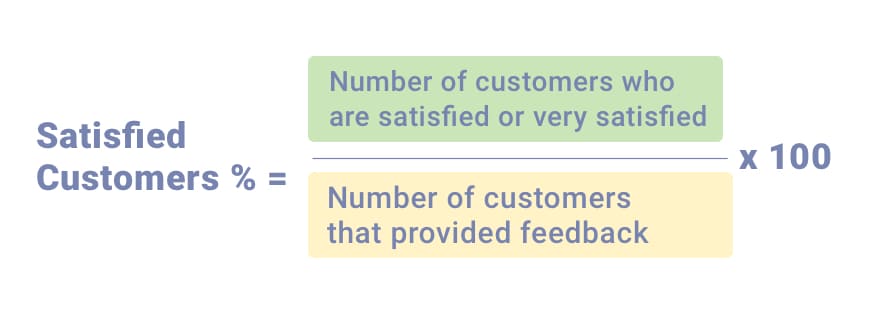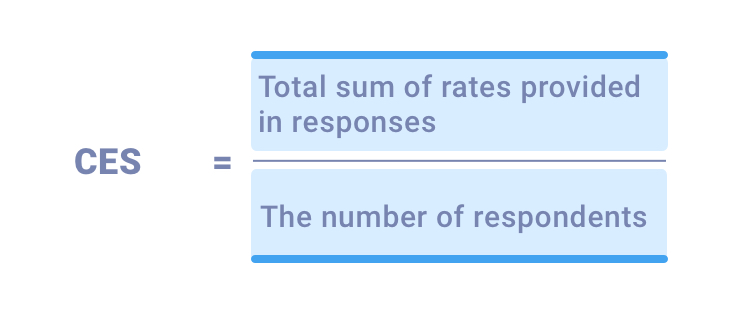
Are you just thinking about starting your own business?
Or are you already working on growing one?
No matter what your perspective is, so far, you’re probably aware of how unpredictable and demanding the modern market may be. Opposite to the old-fashioned concept of commerce, modern ways of doing business (and particularly e-commerce!) go far beyond selling something.
Moreover, 87% of CX and marketing professionals emphasize the importance of customer experience as they study ways to improve the business position and increase customers’ trust.
Now, gaining customers’ loyalty may require diverse strategies, depending on your business nature.
However, to collect customer feedback on their experience and impressions, you don’t really need rocket science, no matter what type of business you run. And that’s what we’re showing you in this post, by contrasting Customer Satisfaction Score (CSAT), Customer Effort Score (CES) and Net Promoter Score (NPS), which are the three most precious metrics for keeping track of your customer experience.
Read on and find out how to use these metrics properly, what type of insight you can gain from each of them, and how to use them effectively to take your customers’ loyalty to a higher level.
Essential Customer Loyalty Metrics: CSAT, CES AND NPS Compared
Before we start analyzing each of the metrics, you should know that calculating them requires you to create a survey. So, before you start to learn more about them, make sure to get equipped with reliable online survey maker software.
#1. CSAT (Customer Satisfaction Score)
CSAT is a convenient customer satisfaction metric as it lets you check how happy your customers are with different segments of your relationship. These segments may refer to an event, a product, or a service.
How to Create a Survey to Measure CSAT?
First, define a question that addresses the aspect of your relationship that you want to evaluate. For example, some of the common survey question examples are:
- How would you rate your latest experience with our support staff?
- How would you rate our product package and delivery?
Apart from the question, you should also define your response scale and place it in your survey. Commonly, this scale includes five replies: very unsatisfied, unsatisfied, neutral, satisfied, very satisfied.
CSAT Calculation and Interpretation
While numerous companies use CSAT to calculate average satisfaction, this use is not as insightful as the calculation of satisfied customers percentage. So, to get the most out of CSAT, you should rely on this formula:

Apparently, this metric shows you the percent of your customers that are happy or very happy with the aspect of your relationship in question. The higher this percentage is, the lower is the number of unsatisfied customers.
The Pros of CSAT
Here is a small list of CSAT pros to help you understand its importance better.
- All you need to start calculating CSAT is an online survey maker and a well-defined question.
- Owing to its simplicity and short form, a large number of customers provide their feedback.
- The response scale is not fixed and you can adjust the range of responses to your business needs.
The Cons of CSAT
Here’s a list of cons for the CSAT metric below.
- As you’re supposed to use it right after a certain action or event occurs, you only get to assess their short-term impressions (which may change in the long run).
- You can’t be sure if your CSAT is good or bad compared to your competition as each company has its own standards and criteria.
- You may not obtain a realistic image of your customer satisfaction as unhappy and indifferent customers commonly aren’t that interested in filling out the form.
Read More: What Is a Customer Satisfaction Score and How to Measure It
#2. CES (Customer Effort Score)
CES is another valuable metric for your customer satisfaction evaluation as it helps you realize how difficult it is for them to perform a certain action during their customer journey. For instance, you can check how difficult it is for them to place an order or get in touch with your support, etc. Once you obtain this information, you can use it to improve their experience.
How to Create a Survey to Measure CES?
Create the statement you want them to evaluate and use your online survey maker software to let them provide scale-based feedback. Some of the survey statement examples when measuring CES are:
- Placing an order on our website was an easy process.
- It was easy to get in touch with company representatives.
Now, the scale for CES is standardized and includes 7 possible answers (1 for strong disagreement, 7 for strong agreement).
CES Calculation and Interpretation
Once you collect customer feedback, you can easily calculate your CES by following the formula:

The interpretation of the obtained value is pretty simple. The lower the value of CES is, the more effort your customers need to put into interaction with your company.
The Pros of CES
If your CES has a high value, it is a clear indication that you can expect new purchases in the future.
You may be able to conclude if you can count on your customers when it comes to referrals.
The results are unbiased and you can easily make a difference between a satisfying and unsatisfying customer experience.
The Cons of CES
- This metric doesn’t segment your customers.
- It doesn’t provide insights into the factors outside of customer experience.
- CES doesn’t help understand why customers experience difficulties using your product or service
Read More: The CES Guide: What Is a Good Customer Effort Score
#3. NPS (Net Promoter Score)
NPS isn’t only a valuable customer satisfaction metric but also an important growth indicator, as it helps you understand both how happy your customers are and how likely they are to spread the word about your products or services. With the use of the NPS metric to measure customer satisfaction, you can reach out to your customers at any stage of their customer journey.
How to Create a Survey to Measure NPS?
When creating the NPS metric survey, there’s no much room for improvisation as it is always based on the same+ question:
How likely are you to recommend our brand/product/service to your friends or colleagues?
This question is followed by a scale from 0 to 10, where 0 represents the least likeliness of recommendations and 10 refers to the highest chances of sharing positive impressions.
NPS Calculation and Interpretation
The calculation of NPS is based on the following formula:

You should know that your result may vary from -100 and 100, and you should keep this value as high as possible. On the one hand, any negative value is a bad sign for your business as it means that you have a larger number of unsatisfied customers. On the other hand, an averagely good score usually goes from 0 to 30. Businesses scoring from 30 to 70 have the loyalty levels above the average, while those with 70+ are considered to have outstandingly loyal customers.
The Pros of NPS
- NPS lets you analyze the phase in your growth process by highlighting your loyalty trend, which makes it an excellent long-run metric of customer satisfaction.
- It’s highly functional as it has the same percent-based formula for all types of businesses (you can use it to compare your performance with your competition).
- It helps measure your customers’ impressions and loyalty through diverse channels.
The Cons of NPS
- NPS isn’t absolutely accurate, as people stating that they would recommend your brand still may not do it.
- Its results are only based on the responses of the existing, present customers (it doesn’t include those who are non-customers).
- If you don’t do the follow-up survey after your NPS survey, you won’t be able to realize why your customers don’t feel like recommending your business.
CSAT, CES AND NPS Compared: Which one is the best?
As you can see by having CSAT, CES and NPS compared, we can’t refer to any of them as a better or a worse metric as each of them has its specific purpose and a unique approach to your customer satisfaction.
On the one hand, eliminating any of them from your customer experience evaluation system, you lose valuable insights that cannot be provided by the remaining metrics. (For instance, if you don’t calculate NPS, you can’t get any long-term results).
On the other hand, by relying on each of these parameters, you build up the synergy of metrics that lets you assess customers’ impressions from completely different perspectives.
You get to monitor them in both the short and long run, keeping track of their overall satisfaction with your brand, the effort they have to make during their journey, and their interest in becoming your brand promoters.
Accordingly, to be able to nurture a holistic approach to your relationship with customers and get to know what they really think and feel, you should not treat the mentioned tools as separate indicators of your CX. Instead, think of them as a valuable set of complementary metrics that will help you improve your relationship with customers by deepening your insights on their thoughts and feelings.
Do you want a free Survey Software?
We have the #1 Online Survey Maker Software to get actionable user insights.







